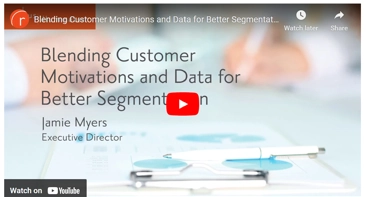Brand teams rely on clear Targeting research to anchor initiatives across their organization. From strong messaging to innovative new product lines, having a deep understanding of high value targets keeps teams focused and aligned on growth strategies that will attract their core customers. This foundational research tool is a core element of our Brand Growth Navigator approach to overall brand health.
Targeting research helps brands achieve stronger business outcomes.
Insights from targeting research help teams set clear priorities to connect the brand’s strongest attributes with the right growth targets and create a knowledge base teams use to develop product line expansion and other new opportunities. Teams can leverage targets to drive meaningful impact on overall brand growth by providing detail and direction to brand teams as they build their strategies. For example, sales and marketing teams may use insights about specific targets to design new customer or client acquisition and retention programs.
This research also has an underlying impact on ROI. Teams can reference high-opportunity target profiles to create premium product or service features that appeal to specific groups to increase sales and revenue, and then design effective messaging strategies and ads to optimize spending. A deep understanding of targets and their needs also helps teams stay on top of market trends that can lead to new opportunities.
When is the best time to review targets?
People and markets change continually, so gaining a fresh view of your targets and segments is an ongoing process. It’s essential to conduct research when launching a new business or product line, but businesses of all sizes should look for signals that indicate it’s time to update the research which may arise every few years. For example, consider refreshing your research when:
- Brand teams and leaders are making assumptions rather than referencing trustworthy data.
- Stakeholders disagree about target customer characteristics.
- Markets change – but your approach remains stagnant.
- Red flags such as reduced web traffic or sales slumps move from “blip” to “trend.”
Maintaining fresh and meaningful insights requires buy-in and participation from stakeholders across the organization who will participate in the research process, use the targets in their work, and raise a flag when it’s time to take a new look.
Stakeholder participation is critical for a successful study.
Your stakeholders are influential in identifying segments and driving success with target development. Asking for their input during targeting research ensures all issues for exploration are voiced and build buy-in and alignment across the organization.
We begin projects with brand team and stakeholder interviews to learn about the research they’ve conducted in the past, and to see how they’re currently defining and using key segments and targets. Our conversations with specific teams give us valuable information about how each team will act on the insights to drive growth in their specific area. These interviews help us develop foundational knowledge about how their program has worked in the past, and what we can build into the research so they can meet their goals and key business objectives.
Exploratory customer research sets the foundation for Target development.
With a deeper understanding of internal goals, we may conduct initial interviews with customers to develop broad profiles to see how they might fit into larger market segments. This gives us an opportunity to set initial hypotheses and analyze data as we prepare to go into the segmentation phase. Conversations also help us determine customer needs, preferences, and desires, and round out our knowledge about demographics.
A holistic data-driven approach supports strong target development.
Despite advances in AI, there is no single formula that supports accurate segmentation or targeting development. In fact, brands that make shallow assumptions about targets without deeper research often have trouble connecting meaningfully with customers and meeting their business goals.
To create segments that will meet your team’s objectives, we take a comprehensive approach to analysis, evaluating all viable segmentation options to find the best fit for your specific needs. This holistic method ensures we will design meaningful, relevant, and differentiated segments for your team.
Qualitative and quantitative research is needed to refine the segments and identify specific targets. Each brand and each project has its own set of needs, requiring particular analytical techniques which can include:
- Varying Inputs, Number of Clusters Retained Techniques
- Profiling
- Comparing to other solutions
We’ll review the results with your team, along with opportunity scoring, to gain feedback and alignment as the project moves forward.
A primary concern for us throughout your study is data quality. Reliable data is critical to developing clear and growth-focused targets. We invest a great deal of time and effort in ensuring high-quality sample data, vetting the data throughout the study to ensure integrity.
Targeting strategy development focuses on opportunities.
We evaluate high opportunity segments to find ideal targets for each segment. To ensure this process takes a holistic view, we consider a variety of inputs including market size, potential for growth and profitability, and your brand’s ability to fulfill the targets’ needs. We also look at the competitive landscape to ensure the opportunities are achievable in the marketplace.
We partner with key stakeholders as we develop targeting strategy to ensure we’re selecting target segments that will align with team and organizational goals. We also consider brand positioning and other internal and external factors that might inhibit or propel success for each segment.
As targets begin to take shape, we may conduct additional testing to validate the strategy before we move into persona development.
Personas bring targets to life to help teams build customer-centric plans.
Our collaborative approach transitions the data insights into personas that are relatable and useful to teams across your organization. This interaction is the first step in a successful activation strategy, so we invite stakeholders and teams who will work with the targets to participate in creating the personas. Some activities include.
- Persona development to ensure characterizations reflect the defining elements of each segment.
- Internal workshops to introduce segments to teams and educate them on nuances that will help them use each segment properly.
- Communication tools to bring the segments to life and foster wide adoption. These can include posters, pocket guides, and even role-playing scenarios that put stakeholders in the customers’ shoes.
- Validation techniques to test personas in real-world scenarios bring additional insights on assumptions about personas and how they will perform in the market.
This hands-on approach breathes life into the targets in more dynamic ways making them more visceral and memorable so teams will champion integration across the organization to drive stronger outcomes.
We ensure each team integrates targets to serve their functional role and goals.
Across your organization, each functional team will take a different point of view when integrating targets. A key aspect of our consultative role during a targeting study is working with each team to integrate targets with specific goals in mind.
Segments, targets, and personas are helpful to teams, but only if they understand how to use them to meet their specific goals. As we begin the activation phase of our engagement, we host a meeting where we share the findings with everyone in the organization who will be using the targets. We provide an overview and then dig into specifics about each segment and its key targets. We’ll then work with specific groups across the organization to help them integrate the targets into their specific disciplines.
For global or exceptionally large organizations, or for companies that have expansive product catalogues or complex targets, we will host a Looking Glass session over the course of 1-3 days to immerse the team into learning about and practicing with the targets and personas they’ll use.
Activation sessions are important in driving ROI on the research program. Stakeholders may invite their close third-party partners such as agencies, media buyers, or even retail partners into the process to ensure they’re aligned for success on the insights.
As the targets are implemented, we will continue to check in to see how the targeting strategies are working. We’ll check on progress and goals to evaluate overall success, impact on brand perception, overall sales numbers, engagement and other KPIs that are important to the brand.
Want to take a strategic approach to your most important targets?








